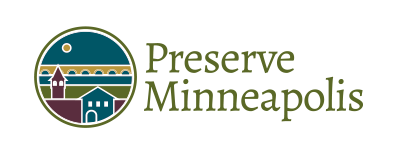Preserve Minneapolis Mission
Preserve Minneapolis: Honoring the Past, Enriching the Future
Preserve Minneapolis is a nonprofit organization dedicated to promoting and celebrating the city’s historic architectural and cultural heritage. Through walking tours, public programs, digital storytelling, and advocacy efforts, the group connects people with the places that shape Minneapolis’ identity. From humble beginnings to a vibrant community-driven movement, Preserve Minneapolis continues to educate, inspire, and preserve the city’s unique built environment for generations to come.
Our History
Preserve Minneapolis was born in 2003 as an informal network of preservationists planning local events for the National Trust for Historic Preservation’s 2007 conference. Originally dubbed Team 007, this group worked to ensure Minneapolis had a strong presence during the St. Paul-based event.
Early efforts included organizing tours, policy discussions, and events like Breakfast with a Preservationist. By 2008, the group formally became a 501(c)(3) nonprofit, adopting the name Preserve Minneapolis. Founding members included Charlene Roise, Bob Roscoe, and Elizabeth Gales, who helped secure nonprofit status and define the organization’s mission.
Tours
Since the start, guided tours of Minneapolis’ architectural gems have been a cornerstone of Preserve Minneapolis’ work. The Evening Explorations series (originally Cocktails with a Preservationist) gave exclusive access to unique spaces like Peavey Plaza, the Foshay Tower, and The Towers Condominiums.
In 2010, Preserve Minneapolis partnered with the city’s Community Planning and Economic Development Agency (CPED) to manage and later take over summer walking tours. These volunteer-led tours continue today, with approximately 25 each year exploring the city’s diverse neighborhoods and historic landmarks.
Digital History: Minneapolis Historical Map
In 2013, neighborhood groups in Old Highland and Marcy-Holmes used grant funding to create online architectural tours. Hosted by Preserve Minneapolis and built on the Omeka platform, the content was later migrated to a full website: interactive map. Today, the site features stories, images, and audio covering hundreds of historic sites across Minneapolis.
Advocacy in Action
Preserve Minneapolis also champions preservation through advocacy. A major success was the restoration of Peavey Plaza. Originally threatened by a complete redesign, the plaza was saved thanks to legal efforts and local advocacy. PM played a key role in shaping a new, accessible design that preserved the space’s historic character and water features.
Board of Directors
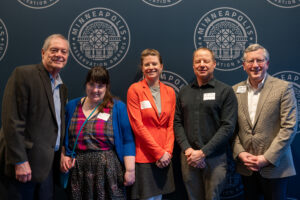
Jen is a native Minneapolitan, an Old Home Certified Realtor® with Keller Williams Realty Integrity Lakes, and a proud house nerd. She holds a B.A. in History from Hamline University.
As a Realtor®, Jen combines her love for history and people to help clients understand old homes—how they function, how to care for them, and how to balance preservation with the evolving needs of modern living. She believes in honoring a home’s past while ensuring it meets the demands of today and the future.
Beyond real estate, Jen is actively involved in her community, embraces volunteer leadership roles, and treasures time with friends and family. She’s also a devoted British TV lover, always ready to chat about her favorite series.
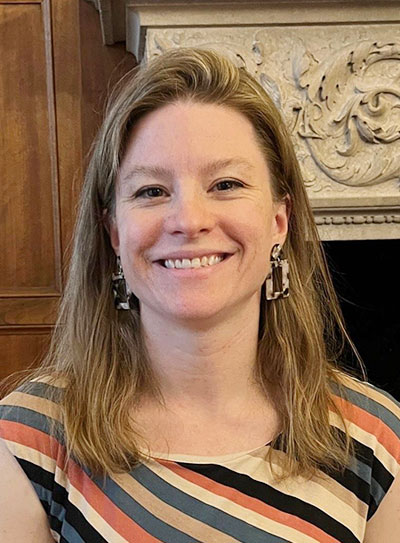
Bob Thaman, Vice President
Bob has had a life-long interest in historic preservation and has been involved with projects in a variety of roles in Minnesota and Ohio. He recently retired from owning a successful advertising business after 32 years of specializing in all media for retail marketing. He now brings his expertise to Preserve Minneapolis to help increase awareness of local preservation projects, this organization and membership.

Elizabeth “Beth” Sowden, Acting Secretary
Elizabeth (Beth) Sowden was born and raised in Northeast Minneapolis. She graduated from Sarah Lawrence College and works as a marketing copywriter. She is the author of the novel, Tough Love at Mystic Bay, and publishes stories and essays on Substack. She lives in Northeast with her mom and 70-pound Airedale named Dodger.
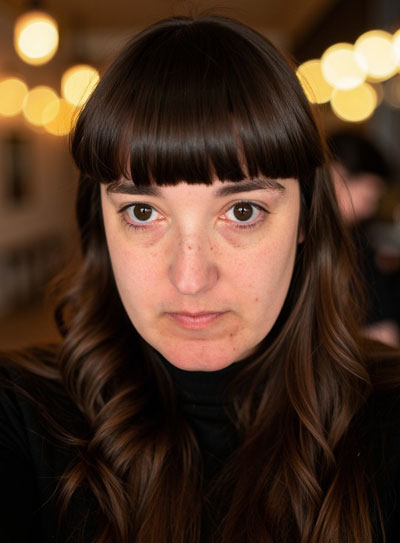
John, who has a master’s degree in History Museum Studies from Cooperstown, NY, was with the Minnesota Historical Society for nearly 30 years. At MNHS, he held several positions including Director of Mill City Museum, and most recently Director of Historic Sites and Museums. In that latter role, he oversaw Minnesota’s network of State Historic Sites, including Mill City Museum, Historic Fort Snelling, Split Rock Lighthouse, and 28 other properties. He also served as coordinator/secretary of the St. Anthony Falls Heritage Board and was vice-chair of the Minneapolis Preservation Commission. He currently serves as chair of the Minneapolis Riverfront Partnership, is a member of the board of the Mill City Farmers Market Charitable Fund, is president of the Minnesota State Grange, and executive director for the Hennepin History Museum.

Rebekah Coffman
Rebekah Coffman is an art and architectural historian based in Minneapolis. She received a Bachelor of Arts from Hamline University in Art History, Religion, and Spanish and a Master of Arts from New York University’s London-based program in Historical and Sustainable Architecture. She has experience in academic, museum, and nonprofit settings and is passionate about storytelling and stakeholder engagement. Her interests center on intersections between visual culture and the built environment, sites with complex shared histories, sacred spaces and religious buildings, and rural revitalization projects.
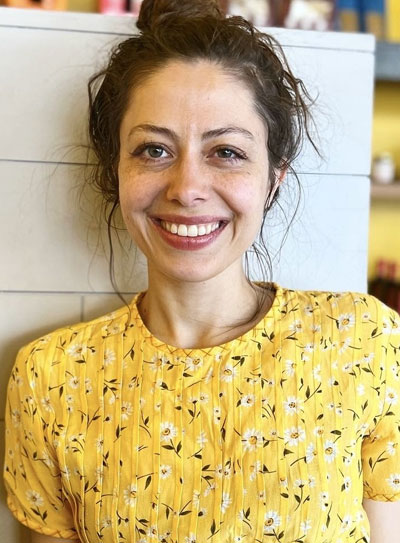
Krishna Dorney
Krishna Dorney studied History and Building Preservation at the University of Minnesota and works as a remodeling Contractor, specializing in custom carpentry and home renovation. He is particularly interested in Prairie School, Arts and Crafts and Art Deco.

David Hlavac
David is a strategic communications professional with more than 20 years of experience in cause marketing, public relations, content strategy and media engagement. A Minneapolis native with vivid memories of downtown in the 1970s and 1980s, David believes strongly that historic preservation is more than just a feel-good pursuit: it’s the very thing that keeps cities alive, vibrant and unique. David earned a Bachelor of Arts degree in American History – with an emphasis on Minnesota History – from the University of Minnesota-Twin Cities, where he enjoyed exploring every corner of Rarig Center, Ralph Rapson’s brutalist landmark on the University’s West Bank Campus.

Richard Woldorsky
Richard has been a designer at Bachman’s Landscape Department in Minneapolis for 32 years. Previously, he was an Urban Planner in the Zoning Subdivision Department of the City of Dallas, Texas. He also worked as a Land Use Planner / Landscape Architect in New England based in Concord, New Hampshire. Richard holds a Bachelor of Landscape Architecture degree and a Bachelor of Arts in Urban Studies from the University of Minnesota. He grew up in Minneapolis’ Northside in a community that can be described as “Old Urbanism,” where relatives lived nearby, kids met up on street corners, and shop owners knew many of their customers by name. His interest in preservation is guided by nostalgia, curiosity, and respect for the history and texture of the city.
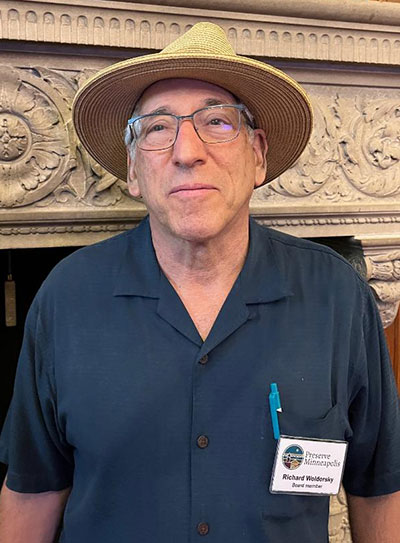
Kathy Kullberg
Kathleen Kullberg was born in historic Homestead, Pennsylvania, site of the deadly Pinkerton fight against U.S. Steel Workers in 1892. She graduated from Penn State University with a B. A. in Interior Design. After college, she trained event horses and young riders while living in Chester County, Pennsylvania prior to moving to Minneapolis in 1981.
Always fascinated by history, she bought a 100 year old home with her husband and began the years long research project that would give her a new career as a local historian, writer, and house detective.
Kathleen is an active preservationist and avid house historian for the Lowry Hill East neighborhood, writing articles for the Hennepin History Museum magazine and Southwest Voices digital site. She also leads historic walking tours for Preserve Minneapolis on the history of the Wedge, recounting the stories of the early residents including author Maud Hart Lovelace. For several years, she has been passing on her knowledge of how to sleuth your own stoop through the Community Education programs of the Minneapolis Public Schools.
Currently she is researching a book on the lost Japanese gardens of John Scott Bradstreet, an early Minneapolis interior designer. Kathleen is always searching for and discovering the true lives of past residents and their contribution to the Twin Cities past and present.
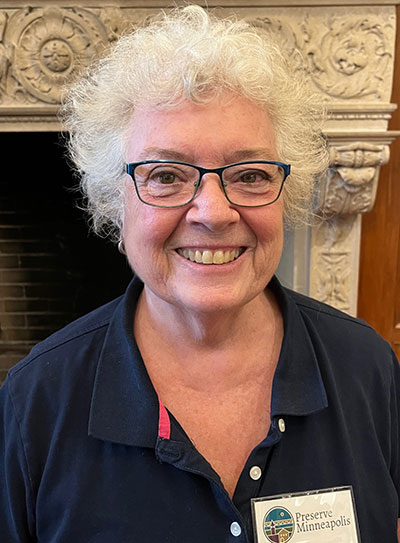
Emily Noyes
Emily Noyes is an education consultant and the founder of Hollow Oak Consulting, where they lead projects at the intersection of historic preservation, sustainability, and community development. With a background in education and policy, they bring a systems-level approach to advancing equity in the built environment. A former Education Manager at Rethos and current board member of both Reuse Minnesota and Preserve Minneapolis, they are passionate about lifting up community histories and promoting inclusive, climate-conscious preservation practices. They have a B.A. in History from Macalester College, and an M.S. in Education from the University of Pennsylvania.

Sophie Bell
Sophie Bell (she/her) works in Historic Preservation consulting and is an avid collector of recipes, hobbies, art, friends, and clutter. She grew up in St. Louis, Missouri, the city to which she attributes her love of old buildings. She holds a bachelor’s degree in Engineering and Applied Design from Berea College, and a master’s in Heritage Studies and Public History from the University of Minnesota. For her, preservation is about exploring layered histories—architectural, political, cultural, and personal—and understanding how these continue to shape the built landscape.

